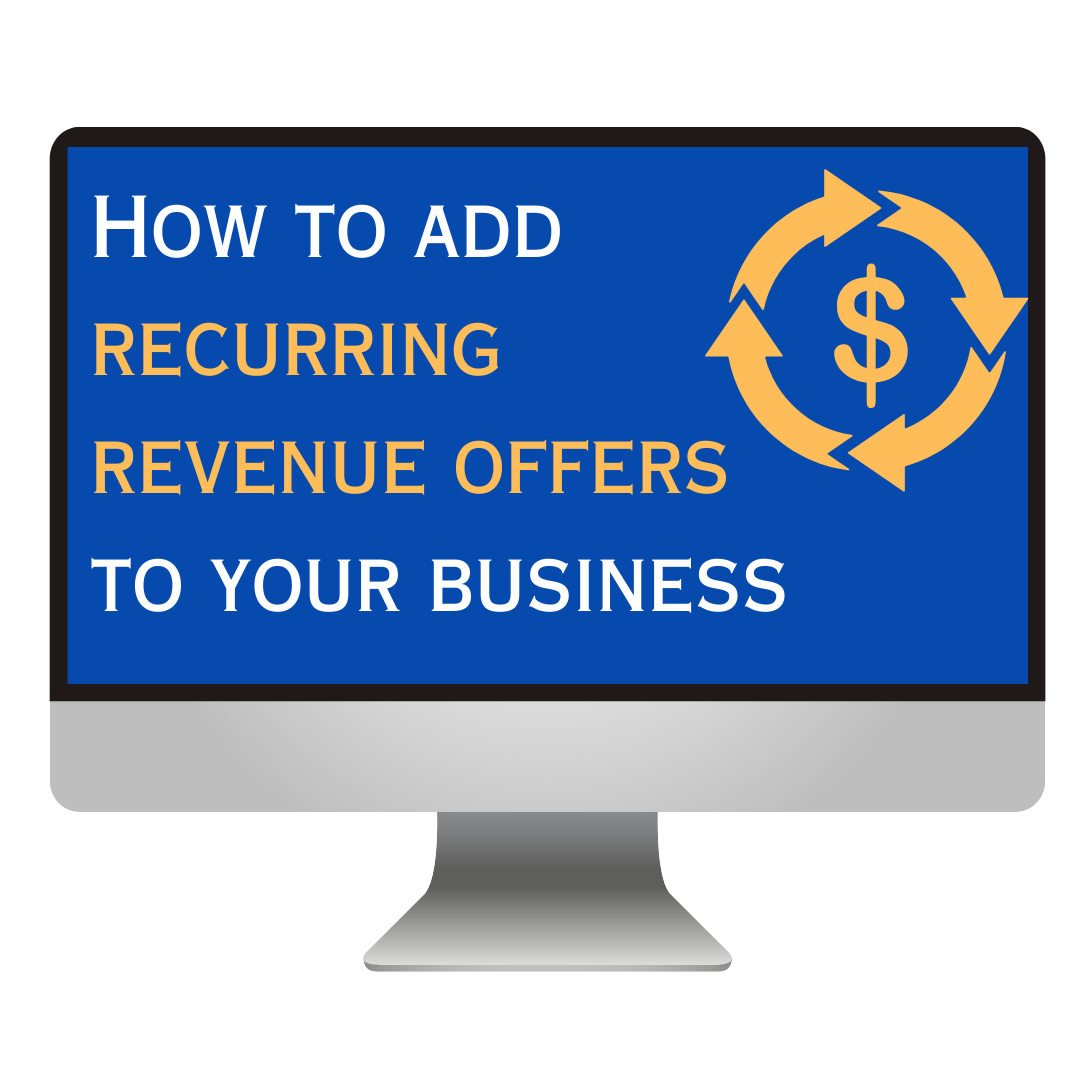Want to add a Course Timer?

Creating Your Tripwire Product
If you do not already have a digital product to offer as a tripwire, we'll walk through what tools and tech you'll need to create and deliver it.
Understanding the various formats and delivery options will help you choose the best way to share your knowledge and value with your audience.
Creating a digital product involves transforming your ideas, skills, and expertise into a tangible offering that can be distributed and consumed online.
Each format has its own unique advantages and can cater to different audience preferences and learning styles.
First, consider your audience and the format in which they prefer to consume content:
• Do they prefer printable documents, like templates and calendars in PDF format?
• Do they prefer interactive digital documents, like fillable worksheets or spreadsheets?
• Do they prefer interactive digital documents, like fillable worksheets or spreadsheets?
• Do they prefer audio content they can consume during commutes or while multi-tasking? (walking the dog or sitting in school carline)
• Are they visual and prefer on-screen content such as video walkthroughs, skill demonstrations, or product tutorials?
Choose your product format based on what appeals to your audience the most and also consider the depth and complexity of the information you want to share and the level of interaction required. Align your format choice with these considerations so you can create a digital product that delivers maximum value and engagement to your buyers.
To create printable document products:
Single-page printable documents are concise, easy-to-digest resources that provide practical information or step-by-step instructions on a specific topic. These guides are typically delivered as downloadable PDFs that users can print out and refer to as needed.
Printable documents are great for checklists, templates, worksheets, and planners. They offer immediate value and are particularly appealing to those who prefer physical copies to digital-only content.
eBooks, workbooks, and comprehensive guides are multi-page, digital documents. They can range from short reports to full-length books, and are usually formatted as PDFs, ePubs, or Mobi files.
eBooks are ideal for sharing in-depth knowledge, storytelling, and providing in-depth information. They can be viewed on various devices, making them accessible and convenient for your audience.
- Use a digital design tool like Canva to design your document.
- Download the document in PDF format
- Optimize (compress) the document to minimize upload/download time and the space it requires for storage (for both you and the buyer)
- Upload your final product PDF to a file hosting service like Amazon S3 or Dropbox (do not store your lead magnet download files on your WordPress website)
- Provide the document download link and download instructions to your buyers in your product purchase delivery email.
Interactive digital documents
Interactive digital documents are ideal for users who access the content on a device and require a digital format to be used. Items such as fillable worksheets, calculators and budget planners are examples of interactive digital documents.
To create:
- Use a tool like Canva to design your document.
- Download the document in PDF Standard format
- Download the document in PDF Standard format
- Use a PDF editing tools like PDF Escape or DocFly to add Form Fields to your document
- Download the document in PDF format
- Optimize (compress) the document to minimize upload/download time and the space it requires for storage (for both you and the buyer)
- Upload your final product PDF to a file hosting service like Amazon S3 or Dropbox (do not store your lead magnet download files on your WordPress website)
- Provide the document download link and download instructions to your buyers in your product purchase delivery email.
- Optimize (compress) the document to minimize upload/download time and the space it requires for storage (for both you and the buyer)
- Upload your final product PDF to a file hosting service like Amazon S3 or Dropbox (do not store your lead magnet download files on your WordPress website)
- Provide the document download link and download instructions to your buyers in your product purchase delivery email.
To create audio products:
Audio content can be podcast episodes, audiobooks, interviews, case studies, lectures, music, meditations, or music playlists.
- Use an audio recording software tool such as Audacity or GarageBand
- Edit your audio to create a final product
- Upload your final product PDF to a file hosting service like Amazon S3 or Dropbox (do not store it on your WordPress website)
- Provide the audio file link to your buyers in your product purchase delivery email.
- Edit your audio to create a final product
- Upload your final product PDF to a file hosting service like Amazon S3 or Dropbox (do not store it on your WordPress website)
- Provide the audio file link to your buyers in your product purchase delivery email.
To create video products:
Video content such as recorded workshops, a training series, or a skills-based tutorial are ideal for content that needs to be presented visually and is best delivered by an instructor or presenter. Be sure to use a file hosting platform designed for video that will allow for video embedding and can protect your content from downloads.
- Record your content using screen recording software and/or a webcam
- Edit the content using video editing software like iMovie, Camtasia, or Canva
- Optimize (compress) the video with a compression tool like Handbrake to minimize upload/download time and the space it requires for storage (for both you and the buyer)
- Upload your final product to a file hosting service like Amazon S3 or Dropbox (do not store your lead magnet download files on your WordPress website)
- Edit the content using video editing software like iMovie, Camtasia, or Canva
- Optimize (compress) the video with a compression tool like Handbrake to minimize upload/download time and the space it requires for storage (for both you and the buyer)
- Upload your final product to a file hosting service like Amazon S3 or Dropbox (do not store your lead magnet download files on your WordPress website)
- Be sure to product your video from user download access
- Provide the video hosting link to your buyers in your product purchase delivery email
- Provide the video hosting link to your buyers in your product purchase delivery email
To create courses
Online courses are structured learning experiences that combine various types of content, including videos, audio, interactive quizzes, and documents. They can be self-paced or instructor-led, and are typically hosted on a learning management system platform (LMS) like Teachable or Digital Access Pass (which also doubles as a membership platform).
Online courses allow you to provide comprehensive training on complex topics, offering a step-by-step learning path for your students.
Online courses allow you to provide comprehensive training on complex topics, offering a step-by-step learning path for your students.
- Create your course content using video, audio, and/or downloadable documents
- Optimize all of your content files to minimize hosting/disk space
- Upload your content to file hosting (such as Amazon S3)
- Optimize all of your content files to minimize hosting/disk space
- Upload your content to file hosting (such as Amazon S3)
- Use a membership or LMS platform to deliver course content such as Digital Access Pass or Teachable
- Integrate your payment processor account with your platform account
- Provide the client portal / course access instructions to your buyers in your product purchase delivery email.
- Provide the client portal / course access instructions to your buyers in your product purchase delivery email.
To create email-based products
Email-based digital products could be items such as challenges or newsletter subscriptions where the buyer will only receive the content in the form of email and there isn't a specific product that needs to be uploaded or delivered.
Email-based digital products could be items such as challenges or newsletter subscriptions where the buyer will only receive the content in the form of email and there isn't a specific product that needs to be uploaded or delivered.
- Create a tag in your email marketing platform called "<Product Name> Buyer"
- Set up your email content in your email marketing tool (depending on your platform, it may be called a sequence or an automation)
- Create a trigger for the automation/sequence that is based on the subscriber being assigned the tag you created in the first step
- Create a trigger for the automation/sequence that is based on the subscriber being assigned the tag you created in the first step
- Create an automation connecting your shopping cart software to your email marketing platform that indicates when a buyer purchases that product, they will be assigned the "<Product Name> Buyer" tag you created in the first step
** DAP/SPC has this segmentation functionality built-in, if your shopping cart does not offer this, use Zapier to create an integration between the two programs to indicate which of your email subscribers are also product buyers.
** DAP/SPC has this segmentation functionality built-in, if your shopping cart does not offer this, use Zapier to create an integration between the two programs to indicate which of your email subscribers are also product buyers.
With your product deliverable created:
>> Set up your digital product in your ecommerce/shopping cart software or choice.
If you are using DAP, create a course OR a product and add the product as shown in the DAP tutorial.
If you are using ConvertKit ecommerce, create a product and generate a purchase link.
- From either platform, generate a link to your shopping cart checkout page for the product.
You'll use this link on your Tripwire Sales page.
You'll use this link on your Tripwire Sales page.

